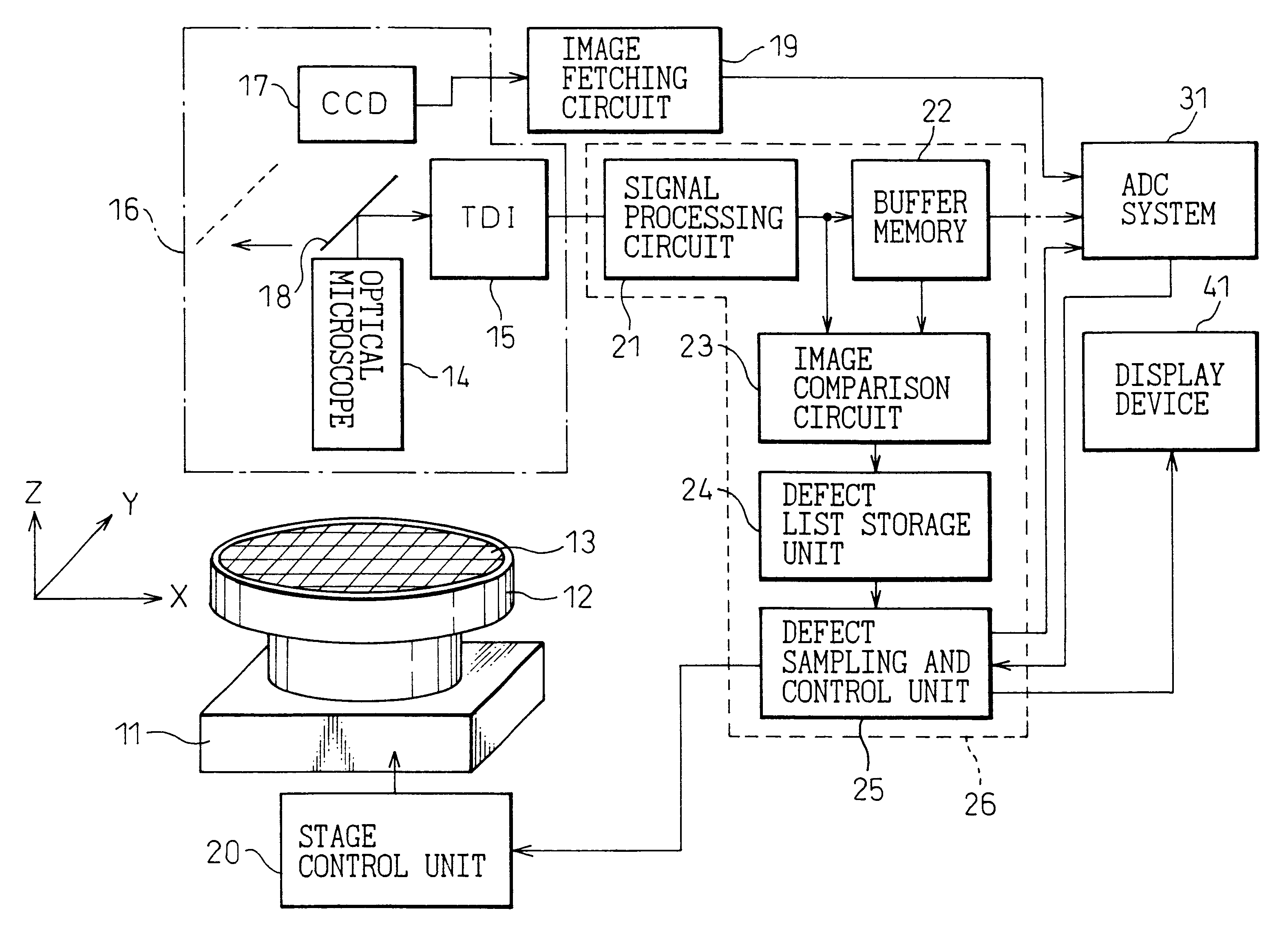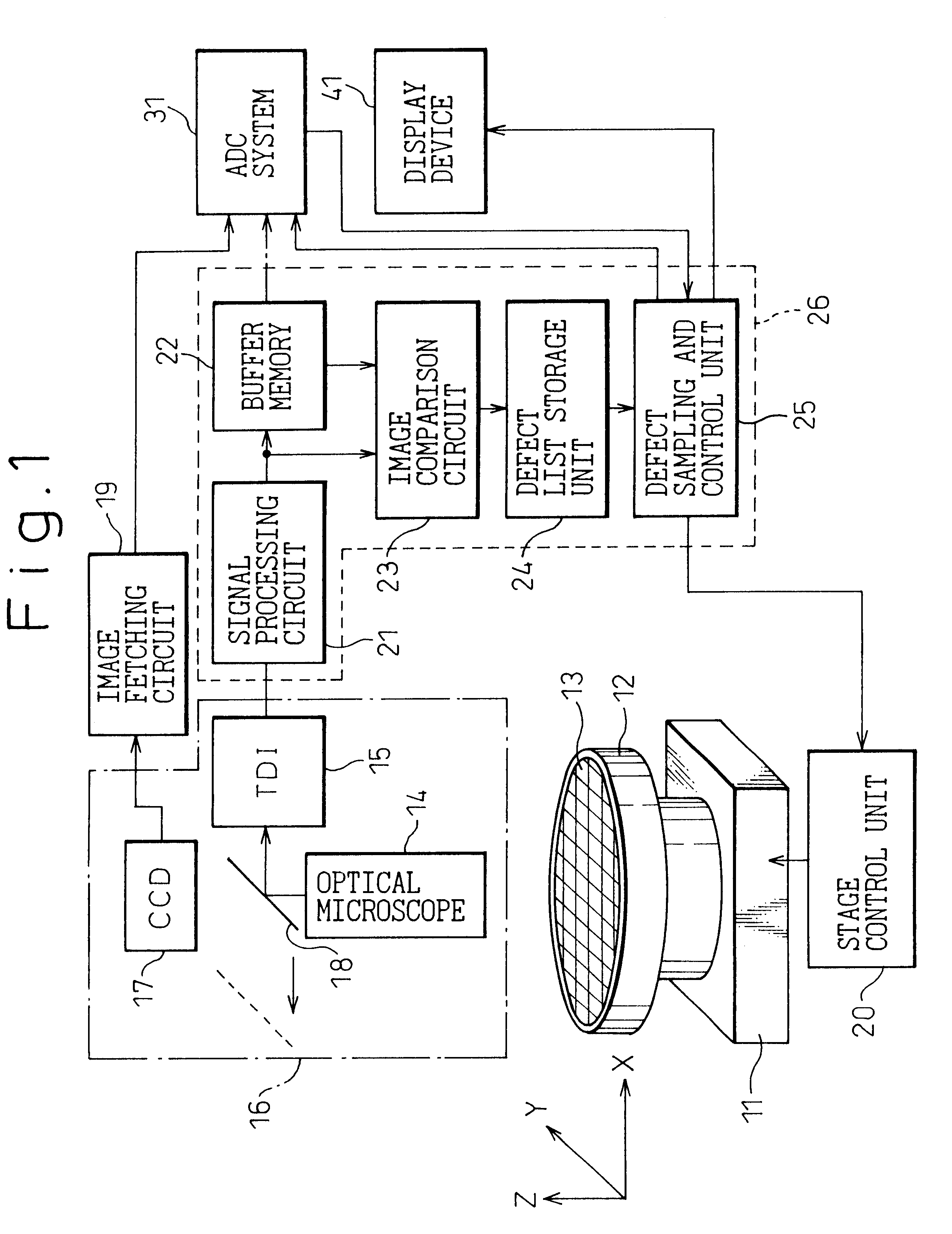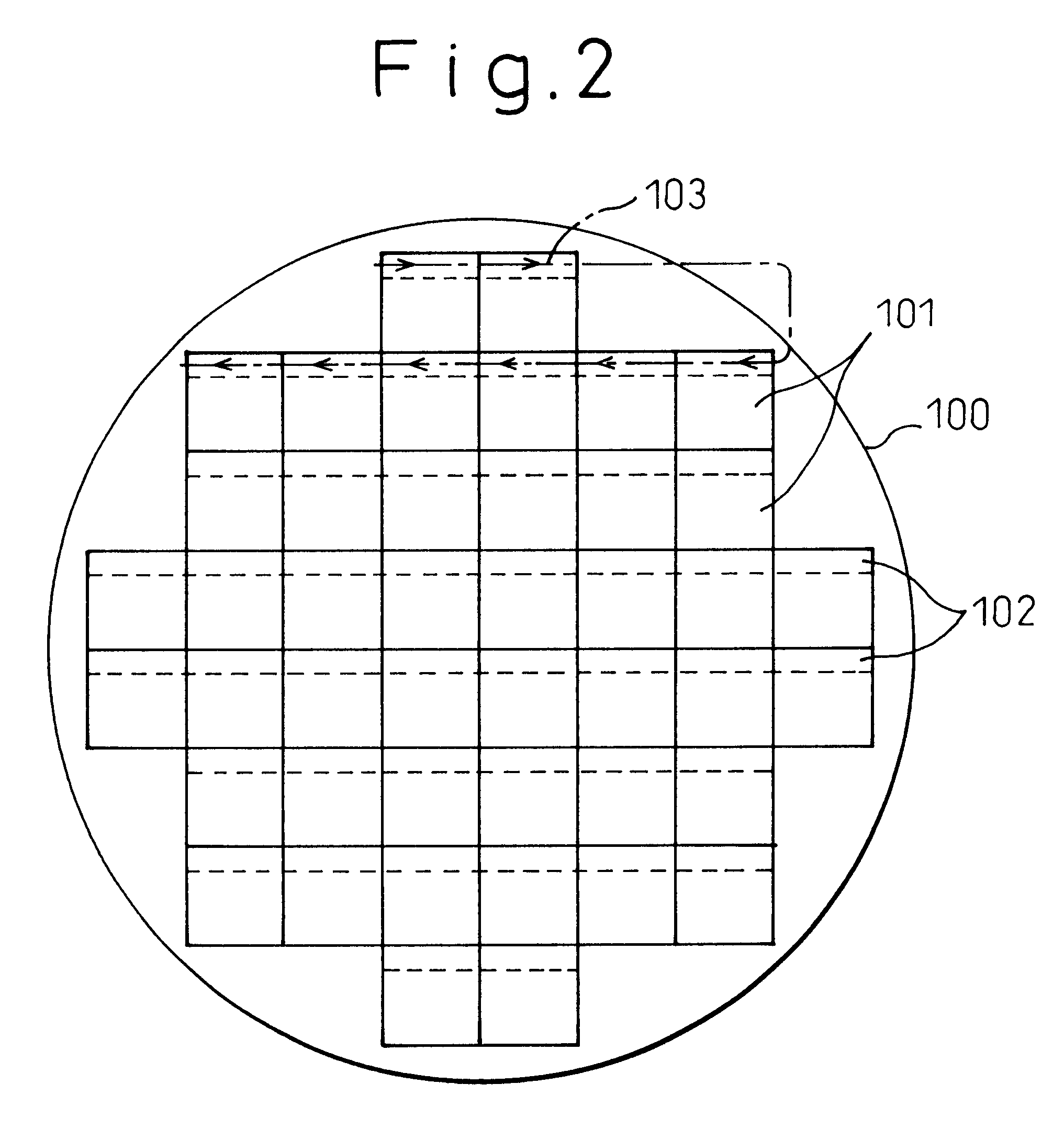Appearance inspection machine and method for concurrently performing defect detection and classification
a technology of appearance inspection machine and classification method, which is applied in the direction of image enhancement, semiconductor/solid-state device testing/measurement, instruments, etc., can solve the problems of accumulating defects at one step, enormous number of defects would be found at the last step, and inability to meet cost and labor, so as to shorten the processing time and improve the throughput of inspection
- Summary
- Abstract
- Description
- Claims
- Application Information
AI Technical Summary
Benefits of technology
Problems solved by technology
Method used
Image
Examples
Embodiment Construction
Before proceeding to a detailed description of the preferred embodiments, a prior art will be described with reference to the accompanying relating thereto for a clearer understanding of the differences between the prior art and the present invention.
FIG. 1 shows an appearance inspection machine for semiconductor wafers in accordance with a prior art. FIG. 2 shows a trajectory according to which a semiconductor wafer is scanned to acquire image data during inspection. FIG. 3 and FIG. 4 are flowcharts describing appearance inspection in accordance with the prior art.
As shown in FIG. 1, an appearance inspection machine of a prior art has a semiconductor wafer 13, which has a plurality of dice (chips) formed thereon, mounted on a sample holder 12 installed on a stage 11. The stage 11 has movements thereof controlled by a stage control unit 20. An optical microscope 14 magnifies and projects an image depicting the surface of the semiconductor wafer 13. In the prior art, either of a TDI ...
PUM
| Property | Measurement | Unit |
|---|---|---|
| defect | aaaaa | aaaaa |
| size | aaaaa | aaaaa |
| area | aaaaa | aaaaa |
Abstract
Description
Claims
Application Information
 Login to View More
Login to View More - R&D
- Intellectual Property
- Life Sciences
- Materials
- Tech Scout
- Unparalleled Data Quality
- Higher Quality Content
- 60% Fewer Hallucinations
Browse by: Latest US Patents, China's latest patents, Technical Efficacy Thesaurus, Application Domain, Technology Topic, Popular Technical Reports.
© 2025 PatSnap. All rights reserved.Legal|Privacy policy|Modern Slavery Act Transparency Statement|Sitemap|About US| Contact US: help@patsnap.com



